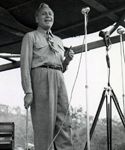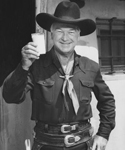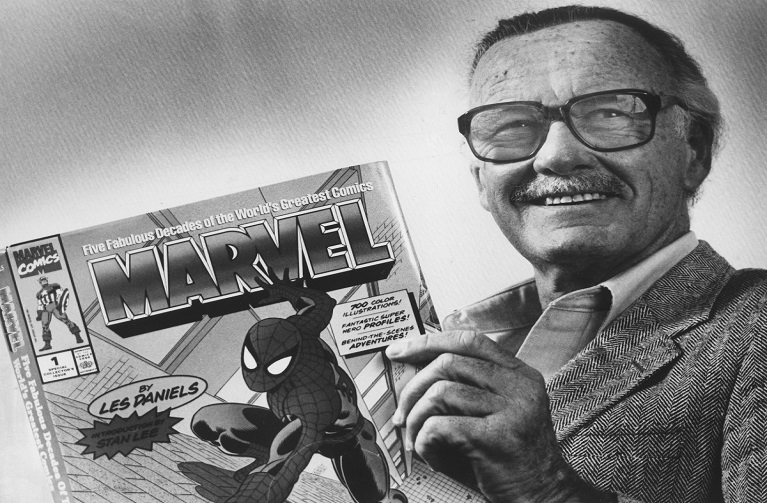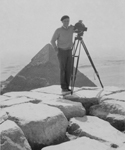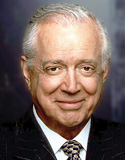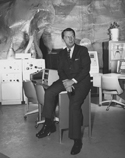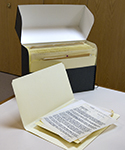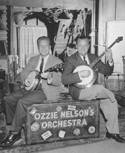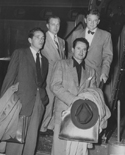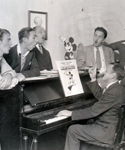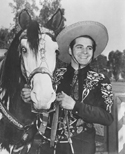Jack Benny Papers
Jack Benny (1894-1974) was an American vaudeville, radio, television and film actor. Born Benjamin Kubelsky in Waukegan, Illinois, Benny first honed his talents as a comedian on the vaudeville stage, then found that his style was uniquely adapted to the new medium of radio, where he became a national celebrity with his Jack Benny Show (1943-1958). His wife, Mary Livingstone often starred on the Jack Benny Show. Benny took his show to television and continued to appear in his own show, in specials, and in guest appearances until his death in 1974.
William Boyd Papers
Boyd was an actor made famous through his portrayal of the cowboy character Hopalong Cassidy on film, radio, and television. Hopalong first appeared in films in 1934, on television in 1949, and on radio and in comics in 1950. The character became enormously popular and Boyd acquired all rights to the Hopalong character in 1948. He consolidated all Hopalong enterprises and began a highly profitable business through promotion of the character. Boyd donated some of his profits to children’s hospitals and homes. Boyd retired in 1953.
Stan Lee Papers
Stan Lee is the creator of the popular comic book heroes Spider-Man, the Incredible Hulk, and the Fantastic Four, and the long-time publisher of Marvel Comics. The collection includes manuscripts and working drafts, fan mail, business correspondence, and audio and video interviews of Lee.
Louis de Rochemont Papers
Louis de Rochemont was a film producer who created the "March of Time" newsreel series. He was also a pioneer in camera technology and developed projects using the Cinerama technique. De Rochemont began his professional career as a filmmaker for the U.S. Navy in the 1920s. He initiated "March of Time" in 1934. In 1943 de Rochemont began working for Darryl Zanuck at Twentieth Century Fox; and in 1947 he formed his own company, Louis de Rochemont Associates.
Hugh Downs Papers
Hugh Downs, a journalist and announcer, hosted the television game show "Concentration" (1958- 1968) and the news shows "Today Show" (1962-1971), "Over Easy" (1977-1980), and "20/20" (1978-1999). Downs produced many television documentary, commercial, and educational films through his production company Raylin Productions. He also worked as a reporter and narrator for television news specials and documentaries.
William Dozier Papers
William Dozier was a television producer. He worked in production in several major television studios then started his own Greenway Productions in 1964. While with CBS he supervised the production of "Perry Mason," "Twilight Zone," and "Gunsmoke." His Greenway Productions worked with 20th Century Fox to produce popular 1960s television programs, including "Batman" and "Green Hornet."
Anne and Frank Hummert Scripts
Anne and Frank Hummert created and produced the first radio soap operas. Frank worked in advertising with the Chicago firm Blackett, Sample & Hummert when Anne, a reporter, was hired around 1930. While at this firm they conceived the idea of daytime radio serials. The first, "Just Plain Bill", was introduced in 1932. Many others followed gaining tremendous popularity. The Hummerts produced the shows and outlined stories (mainly done by Anne) which were then written by a staff of writers. The Hummerts began producing the shows through their own company in 1943.
Ozzie and Harriet Nelson Papers
Ozzie Nelson, a band leader and radio and television actor, formed his big band, Ozzie Nelson and his Orchestra, in the 1930s. He hired singer and film actress Harriet Hilliard as vocalist. The Orchestra played on the radio. In 1944 the Nelsons started their own comedy radio program, "Adventures of Ozzie and Harriet". The show depicted their family life and featured their two sons, David and Ricky. The show moved to television in 1952 and lasted until 1966. Ricky later became a popular rock singer and David a film and television producer.
Adrian and Joan Scott Papers
Adrian Scott was a screenwriter and motion picture producer. In 1947 he was called before the House Committee on Un-American Activities but refused to answer questions. Scott was jailed for one year and blacklisted as a member of the "Hollywood Ten". In 1957 Scott went to London. He returned to the U.S. in 1968. His work included the film “Mr. Lucky” (1943) and the television special "The Great Man's Whiskers" (1973), a work on Abraham Lincoln. Joan Scott was a film and television writer whose work included scripts for "Have Gun, Will Travel," "Lassie," and "SurfSide 6."
Carl W. Stalling Papers
Carl W. Stalling was a noted twentieth century American music composer and arranger. He was most noted for his scores for "Looney Tunes", a popular Warner Brothers animated cartoon series. Among the most famous of these musical pieces is "What's Up Doc," the Bugs Bunny theme song. Stalling also produced musical scores for Walt Disney productions, and he was a silent film piano and organ player. Stalling received a U.S. patent in 1924 for his tick method of recording and depicting motion pictures. This method became a motion picture industry standard.
Frank and Doris Hursley Papers
Frank and Doris Hursley wrote drama and comedy programs for radio and serial dramas for both radio and television. The collection includes mainly scripts for radio programs (1943-1954) written by the Hursleys along with correspondence and other related materials.
Tim McCoy Papers
Tim McCoy (1891-1978) was an actor in over 80 feature films, most of them Westerns. He was born in Saginaw, Michigan, but moved to the Thermopolis, Wyoming, area as a young man where he worked as a ranch hand and learned Indian sign language and ceremonies. McCoy's first feature role was in "War Paint," (1926). He made a successful transition to talking pictures and finally to television, starring in the weekly "Tim McCoy Show" in the early 1950s.
Duncan Renaldo Papers
Duncan Renaldo was an actor noted for his most popular role as the "Cisco Kid," whom he played in twelve films and in 156 television episodes. The collection contains mainly materials relating to Renaldo's acting and his portrayal of the "Cisco Kid" and "Cisco Kid" memorabilia.

